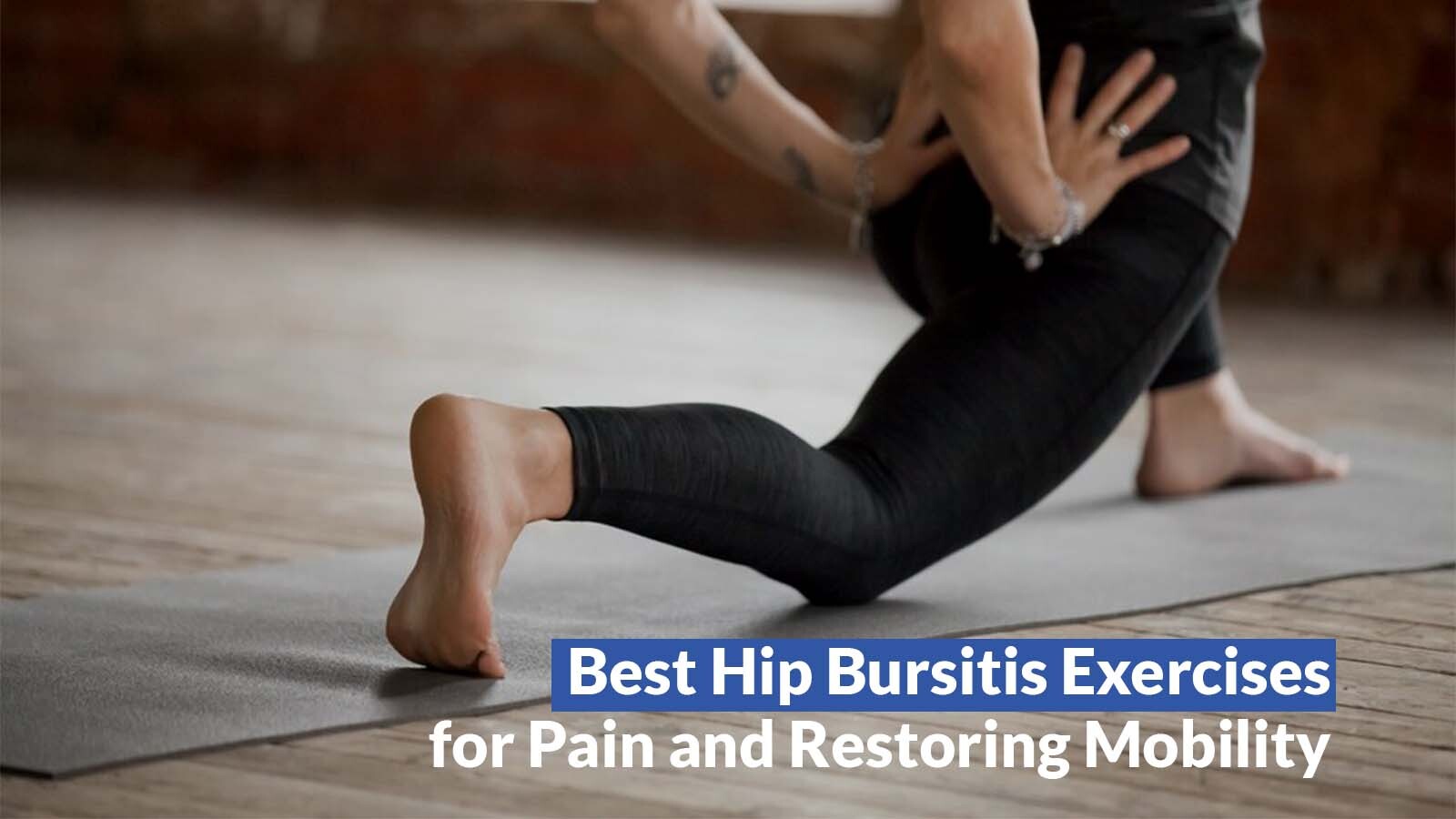You may have always heard that “hip pain equals hip replacement.” Well, that’s not exactly the case, even if you are experiencing hip bursitis (god forbid). Not all hip pain leads to hip replacement. And, the best part is that it can be treated with proper care and some proven and effective hip bursitis exercises.
Hip bursitis is a common condition that can cause significant discomfort and limit your daily activities. At Osteopath Sydney, we understand the challenges associated with hip pain and are committed to providing effective solutions through targeted exercise for hip pain. This guide will explore various exercises, stretches, and strategies to help you manage your symptoms and regain your mobility.
What is Hip Bursitis?
Bursitis is inflammation of the bursa, a fluid-filled sac where your muscles and tendons cross over or attach to bones. Two key bursae in the hip are prone to this irritation. One is located over the bony prominence of the hip, known as the greater trochanter, and when it becomes inflamed, the condition is called trochanteric bursitis.
The other, the iliopsoas bursa, is situated on the inner side of the hip near the groyne. When this bursa gets inflamed, it’s often referred to as hip bursitis, although the discomfort is felt mainly in the groyne area.
You know it’s challenging to diagnose hip bursitis because there are nine different bursae in your lateral hip, any of which can cause stress when damaged, some injuries that can feel very similar to hip bursitis include referred pain from the lower back, gluteal tendinopathy, and gluteal tendon tears. However, specialised osteopaths can pinpoint the pain using different techniques and by carefully listening to the symptoms you describe. Common symptoms include:
Pain on the outer side of the hip
- Tenderness and swelling
- Stiffness and reduced range of motion
Understanding the underlying causes of hip bursitis is crucial for effective treatment and management.
For those who are looking to avoid surgery., hip pain exercises and Stretches for hip bursitis can do wonders for easing pain and increasing flexibility. They help strengthen the muscles around your hip, providing better support and stability. With regular practice, you’ll notice smoother, more comfortable movement in your daily activities!
Now, let’s discuss how hip joint exercises can be beneficial for bursitis by first understanding some causes and symptoms.
Common Causes & Symptoms of Hip Bursitis
Trochanteric or hip bursitis often kicks off with sharp pain on the outside of the hip, which can spread down the thigh and eventually turn into a dull ache. This discomfort usually gets worse at night especially when lying on the affected side and can make everyday movements like getting up, walking, or climbing stairs pretty painful.
But how is it triggered? It’s often caused by repetitive motions, hip injuries, posture issues, heavy lifting, standing for long periods & certain sports. You might also notice tenderness, swelling, or stiffness that makes moving around a bit uncomfortable.
Also, some injuries can feel a lot like hip bursitis, such as pain from the lower back, gluteal tendinopathy, or gluteal tendon tears. But don’t worry, you will be examined & told by the experts when to start hip joint pain exercises and which ones will work best for you after a thorough examination.
What Exercises to Do for Hip Bursitis
Here are some effective exercises specifically designed to manage hip bursitis:
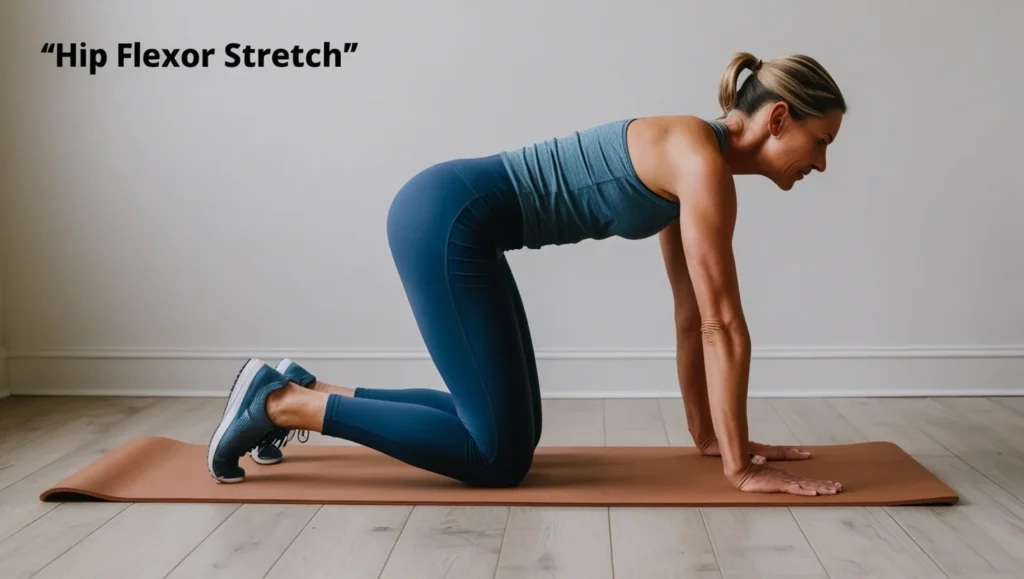
Hip Flexor Stretch
How to do it
Kneel on one knee with your other foot in front, creating a 90-degree angle. Gently push your hips forward until you feel a comfortable stretch in the front of your hip and thigh. Hold this position for 20-30 seconds before switching sides.
What it fixes
This exercise provides deep stretches for hip bursitis to help relieve tightness in your hip flexors, reducing pain and increasing your hip’s flexibility.
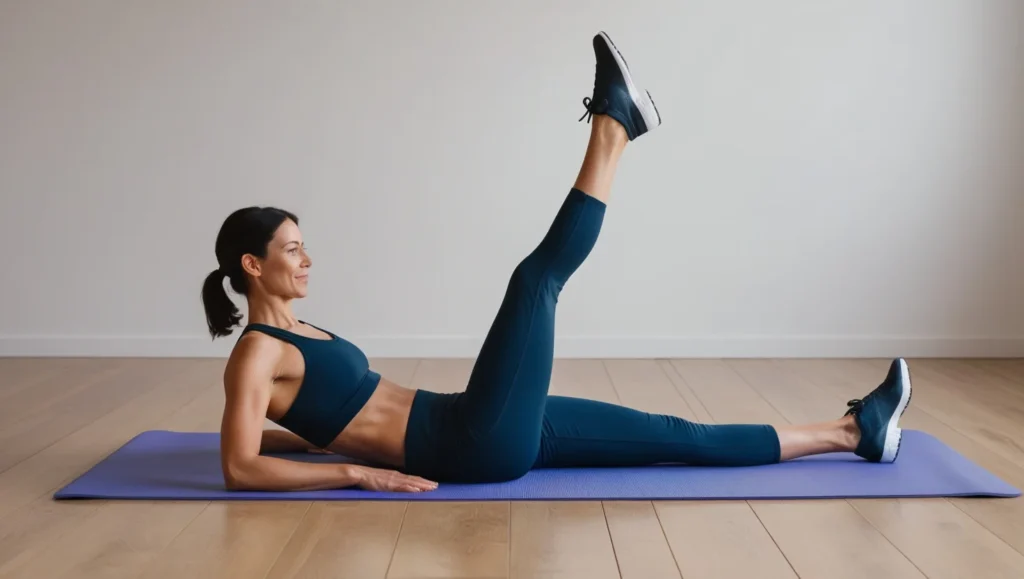
Clamshell Exercise
How to do it
Lie on your side with your knees bent and feet together. Slowly lift your top knee as high as you can while keeping your feet touching and your pelvis stable. Lower your knee back down with control.
What it fixes
This exercise targets the muscles around your hip, especially the glutes, which helps support and stabilise the hip joint, making it less prone to pain.
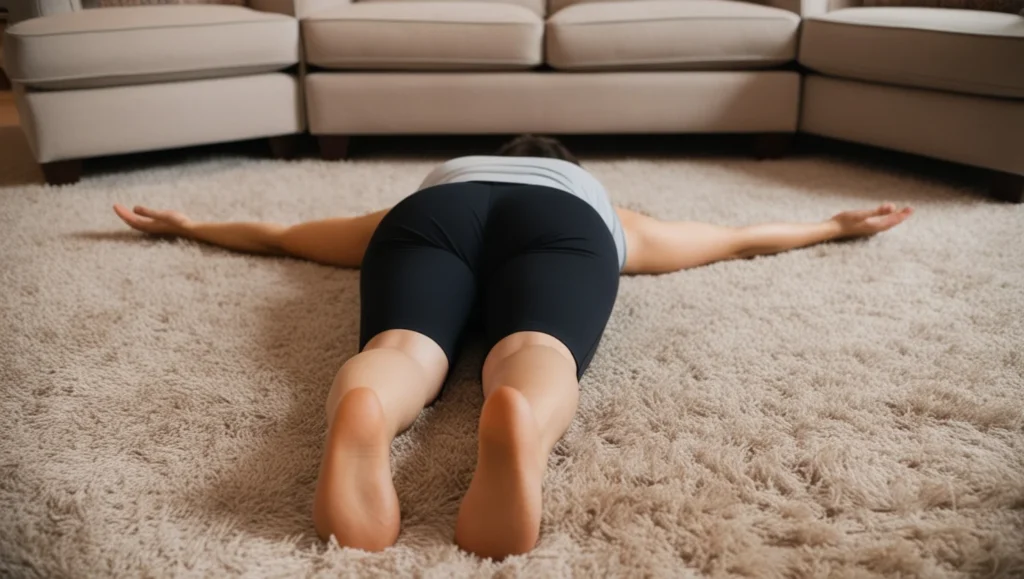
Glute Bridges
How to do it
Start by lying on your back with your knees bent and feet flat on the floor. Lift your hips towards the ceiling while squeezing your glutes, then hold for a few seconds before lowering back down.
What it fixes
This move strengthens your glutes and lower back, which can help relieve pressure on your hip and improve overall stability.
Exercises for Trochanteric Bursitis Hip
Trochanteric bursitis is a specific type of hip bursitis that affects the outer part of the hip. Here are targeted exercises to relieve symptoms: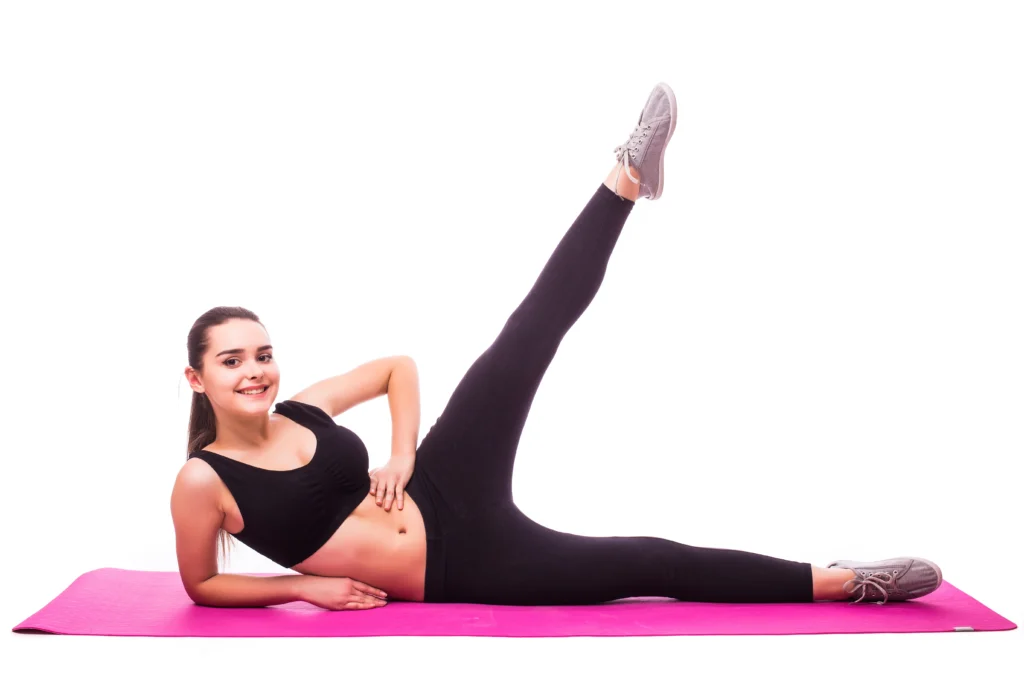
Side-Lying Hip Abduction
How to do it:
Lie on your side with your legs straight. Raise your top leg straight up, keeping it aligned with your body, then lower it slowly. Perform 10-15 repetitions on each side.
What it fixes:
Strengthens the muscles on the side of your hip, boosting strength and support to alleviate pain and enhance mobility.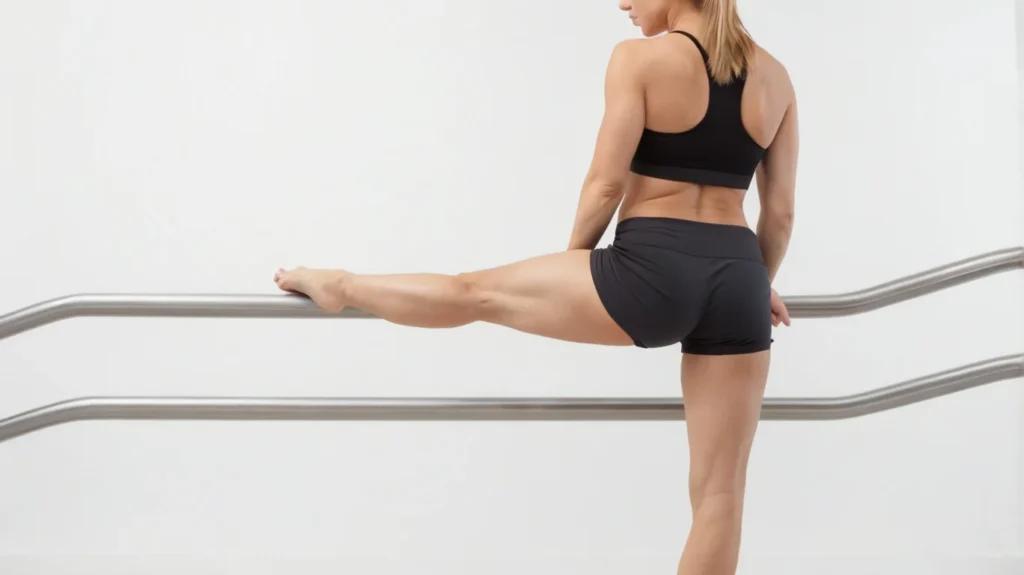
Standing Hip Extension
How to do it
It involves standing on one leg and lifting the other leg straight out to the side. Hold it there for a few seconds, then lower it slowly.
What it fixes:
This exercise strengthens the muscles on the side of your hip, boosting strength and support, which can alleviate pain and enhance mobility.
Incorporating these exercises for trochanteric bursitis hip into your routine can help ease pain and improve your hip’s strength and flexibility. Just be sure to listen to your body and proceed at a pace that feels right for you!
Hip Bursitis Exercises To Avoid
Just like knowing when to step back from a storm to stay safe, understanding which exercises to avoid is crucial for your recovery.
Biking
Riding a bike feels harmless, but when you’re riding, most of your weight rests on your hip, which can make your bursitis more painful. It’s best to hold off on biking until you’re further along in your recovery.
Deep Squats
Deep squats are like pushing your hip to its limits. They place a lot of strain on your hips, which can aggravate bursitis. It’s wise to steer clear of them.
Leg Lifts
Both straight and side leg lifts require strong hip muscles and put extra pressure on the hips. They can make your bursitis flare up, so it’s best to skip them.
Running
Running can put too much pressure on your hip, making the inflammation worse. It’s better to avoid it until your hip feels better.
Machines That Stress Your Hips
Machines like treadmills and ellipticals need healthy hips to use properly. Using these can stress your hip joints, so it’s better to avoid them for now.
Side Tilting Movements
Exercises that involve tilting your body to the side or walking at an angle can increase hip pain. Keeping your body in a straight position helps avoid this.
Whether it’s sitting, lying down, or standing for extended periods, doing any activity for too long can make hip bursitis worse. It’s important to move regularly but not overdo it.
How Osteopath Sydney Can Help with Hip Bursitis?
Hope you’re ready to get back to feeling great with the help of Osteopathic treatment! It’s our expert team here, and we’ve got something special just for you. What if you could finally kick that hip bursitis pain to the curb?
Our personalised treatment plan is designed just for you, using gentle techniques to reduce pain and inflammation. Plus, we’ll show you simple exercises and stretches to keep that hip strong and flexible. And don’t worry, we’ll even give you tips on how to move and sit without straining your hip.
This is all about getting you back to your daily track, pain-free and moving smoothly. Ready to feel the difference? Click below for a free consultation to get started, and let’s get you back on track!

